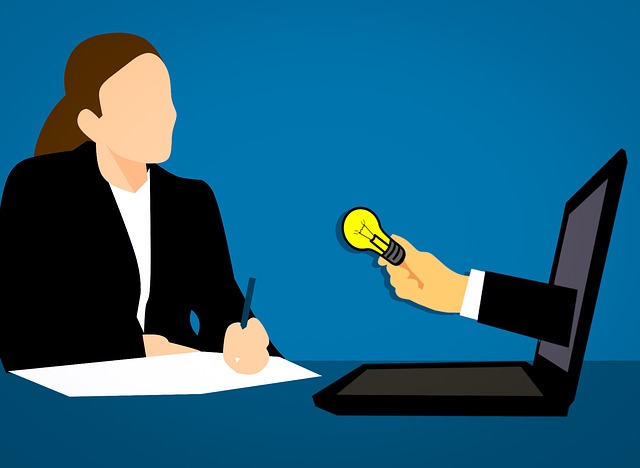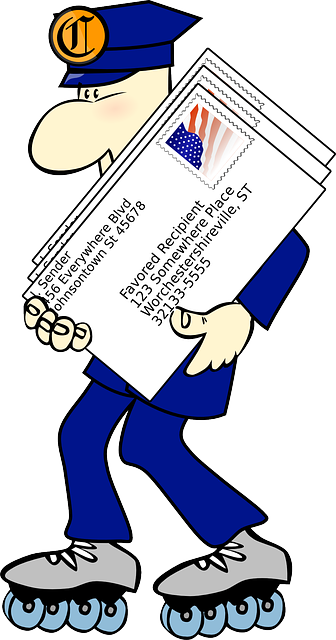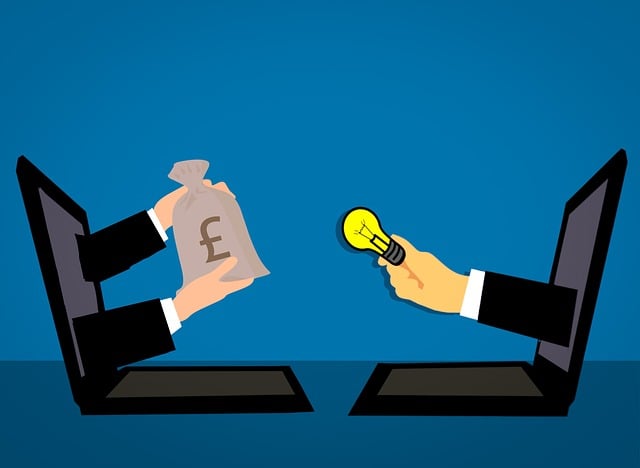Are your email campaigns falling flat, failing to capture the attention of your customers? Are you struggling to keep them engaged and interested in your brand? Well, get ready to witness a monumental transformation in your customer engagement and retention strategies. Brace yourself for the power of email personalization.
Imagine a world where every email you send is tailored to the individual needs and preferences of your customers. A world where every interaction feels like a personal conversation, capturing their attention and sparking their interest. This is not just a dream, but a reality that can be achieved through the art of email personalization.
By collecting and analyzing customer data, segmenting your email list, and crafting personalized email content, you can create an experience that feels tailor-made for each individual. Implementing automation and dynamic content takes it a step further, ensuring every email is relevant and timely. And the best part? You can measure the success of your personalization efforts, giving you the power to constantly improve and refine your strategies.
Get ready to revolutionize your customer engagement and retention with email personalization. It’s time to take your emails from generic to extraordinary.
Key Takeaways
- Personalized emails can significantly improve customer engagement and retention strategies.
- Collecting and analyzing customer data is essential for effective email personalization.
- Segmenting email lists allows for more targeted and tailored messages, leading to higher open and click-through rates.
- Automation and dynamic content can enhance the personalized experience and save time in delivering targeted messages.
Understanding the Power of Personalized Emails
Discover the incredible impact of personalized emails and how they can boost customer engagement and retention.
Personalized email subject lines and content tailored to individual recipients have the power to captivate their attention and make them feel valued.
By incorporating personalization in email marketing campaigns, you can create a unique and customized experience for each customer.
Research shows that personalized emails have higher open rates, click-through rates, and conversion rates compared to generic emails.
When customers receive an email that speaks directly to their interests, preferences, and needs, they’re more likely to engage with your brand and stay loyal.
To achieve this level of personalization, collecting and analyzing customer data is crucial.
By understanding your customers’ behaviors, preferences, and purchase history, you can create highly targeted and relevant emails that resonate with them.
Collecting and Analyzing Customer Data
Explore how gathering and analyzing data about your audience can be like peering through a window into their preferences and behaviors. Data driven decision making is essential for email personalization. By leveraging customer behavior, you can tailor your email content to their specific needs and interests. A great way to collect and analyze customer data is by utilizing a customer relationship management (CRM) system. This tool allows you to track and organize information such as purchase history, browsing behavior, and demographics. By understanding your audience’s preferences, you can create targeted and personalized email campaigns that resonate with them. Take a look at the table below to see how different types of data can be used to personalize your emails:
| Data Type | Use Case |
|---|---|
| Purchase History | Recommend related products |
| Browsing Behavior | Send targeted promotions |
| Demographics | Tailor content based on location |
| Email Engagement | Adjust email frequency and timing |
| Personalized Surveys | Gather feedback for improvement |
Now, let’s explore how segmenting your email list can further enhance your personalization efforts.
Segmenting Your Email List
Segmenting your email list allows you to target specific groups of recipients, increasing the relevance and effectiveness of your campaigns. By dividing your subscribers into different segments based on their demographics, interests, or purchase history, you can create more personalized and tailored messages.
Effective targeting ensures that your emails are delivered to the right people at the right time, resulting in higher open rates and click-through rates. Customized messaging allows you to speak directly to the needs and preferences of each segment, making your emails more engaging and compelling.
Whether you’re promoting a new product, sending out a newsletter, or offering exclusive deals, segmenting your email list is crucial for maximizing customer engagement and retention.
Now that you have your segments in place, let’s move on to crafting personalized email content that will truly resonate with your audience.
Crafting Personalized Email Content
Craft emails that speak directly to your audience’s needs and preferences, ensuring maximum impact and connection. Enhancing email subject lines is crucial for grabbing your audience’s attention and increasing open rates.
Personalization goes beyond simply using a customer’s first name; it involves tailoring the content to their specific interests, demographics, and past interactions with your brand. By analyzing customer data and segmenting your email list, you can create personalized content that resonates with each individual.
Use dynamic content to showcase relevant products or offers based on their browsing history or previous purchases. Implementing automation allows you to send timely emails triggered by specific actions or events, further enhancing the personalized experience for your customers.
By crafting personalized email content and implementing automation and dynamic content, you can cultivate stronger customer engagement and retention.
Implementing Automation and Dynamic Content
Take your email campaigns to the next level by implementing automation and dynamic content. This allows you to effortlessly connect with your audience on a deeper level and create a truly personalized experience.
Automating customer interactions is a powerful way to streamline your email marketing efforts. By setting up triggers and workflows, you can deliver timely and relevant messages to your subscribers based on their behavior and preferences. This not only saves you time but also ensures that your emails are more targeted and effective.
Another key aspect of automation is implementing personalized recommendations. By analyzing customer data and leveraging machine learning algorithms, you can provide individualized product suggestions and content that resonate with each subscriber. This level of personalization can significantly improve customer engagement and drive higher conversion rates.
As you implement automation and dynamic content, it’s important to measure the success of your personalization efforts to ensure continuous improvement and optimize your email campaigns.
Measuring the Success of Your Personalization Efforts
Now that you’ve implemented automation and dynamic content in your email personalization strategy, it’s time to measure the success of your efforts.
This step is crucial in determining the effectiveness of your personalization tactics and tracking the metrics that matter most to your business. By measuring the success of your personalization efforts, you can gain valuable insights into how your customers are engaging with your emails and identify areas for improvement.
To help you visualize your progress, here are three key metrics to track:
-
Open rate: This metric shows how many recipients opened your personalized emails, indicating the level of interest and engagement.
-
Click-through rate: By measuring the number of clicks on links within your emails, you can assess the effectiveness of your call-to-action and content.
-
Conversion rate: This metric measures the percentage of email recipients who took the desired action, such as making a purchase or filling out a form.
Tracking these metrics will provide you with valuable data to optimize your email personalization strategy and drive better customer engagement and retention.
Frequently Asked Questions
How can I ensure that my personalized emails are not mistaken for spam?
To ensure your personalized emails aren’t mistaken for spam, imagine your email as a beautiful song. Just like a melody, it needs to captivate and resonate with your audience.
Avoid spam filters by using techniques like avoiding excessive capitalization or exclamation marks. Personalize without being intrusive by carefully tailoring your message to each recipient and avoiding generic language.
By striking the right balance, your emails will harmonize with your customers and avoid the dreaded spam folder.
What are some effective ways to collect customer data without intruding on their privacy?
To collect customer data without intruding on their privacy, there are effective methods and techniques available.
First, you can use opt-in forms on your website to allow customers to willingly provide their information.
Additionally, conducting surveys or offering incentives in exchange for data can be helpful.
It’s crucial to ensure transparency and clearly communicate how their data will be used and protected.
By implementing these privacy protection techniques, you can gather valuable customer insights while respecting their privacy concerns.
How often should I update my email segmentation criteria to ensure relevance?
To ensure relevance, it is important to update your email segmentation criteria frequently. Research shows that personalized emails deliver 6 times higher transaction rates, driving a stronger emotional connection with your customers. By segmenting your email list based on key elements like demographics, purchase history, and browsing behavior, you can send targeted and personalized content that resonates with your audience.
This will result in higher engagement, increased customer satisfaction, and ultimately, improved retention rates. Stay ahead of the game by continuously refining your segmentation criteria.
Are there any best practices for writing personalized email subject lines that increase open rates?
To increase open rates, it’s important to use subject line personalization techniques. Here are some best practices to follow:
- Start by addressing the recipient by name, making the email feel more personal.
- Incorporate keywords that resonate with the reader, such as their interests or recent purchases.
- Create a sense of urgency to encourage immediate action.
- Keep subject lines concise, clear, and compelling.
- Experiment with emojis or symbols to stand out in crowded inboxes.
By writing personalized email subject lines, you can grab the reader’s attention and improve engagement.
What are some key metrics to track when measuring the success of personalized email campaigns?
To measure the success of personalized email campaigns, there are key metrics you should track.
Customer satisfaction is a crucial metric as it reflects how well your emails are resonating with recipients. By monitoring conversion rates, you can determine if your personalized emails are effectively driving actions and achieving desired outcomes.
These metrics provide valuable insights into the effectiveness of your campaign and help you make data-driven decisions to optimize future efforts.
Conclusion
In conclusion, personalizing your email marketing efforts is crucial for improving customer engagement and retention. By collecting and analyzing customer data, segmenting your email list, and crafting personalized email content, you can create a more personalized and relevant experience for your customers.
Implementing automation and dynamic content further enhances the effectiveness of your emails. And here’s an interesting statistic to consider: personalized emails have been found to generate six times higher transaction rates.
Imagine the impact that personalized emails can have on your business! Start personalizing your emails today and reap the benefits of increased customer engagement and retention.








